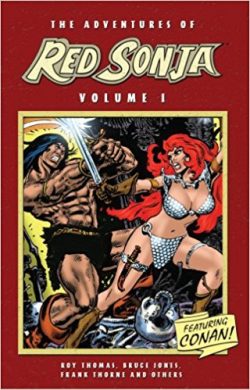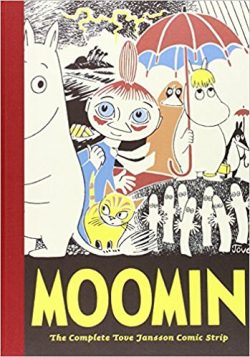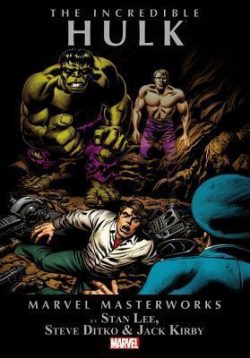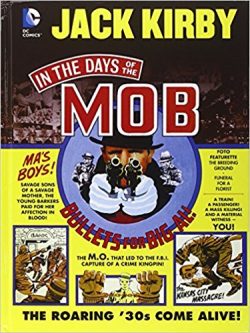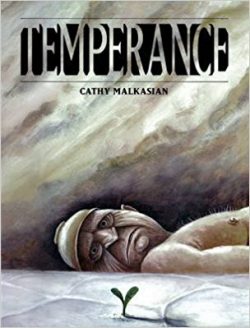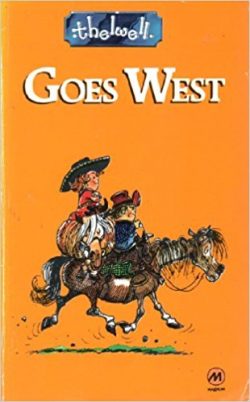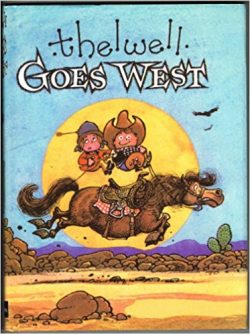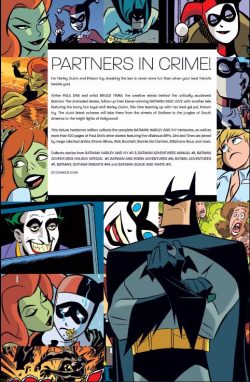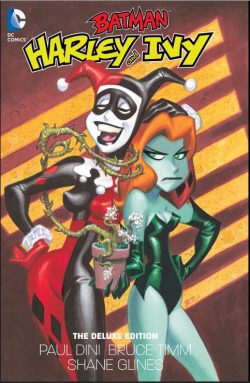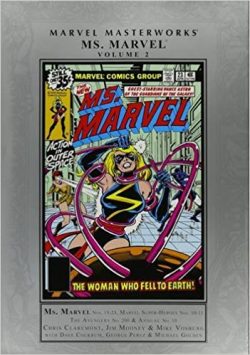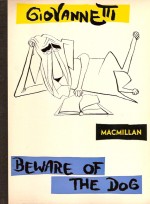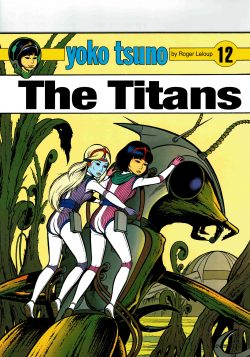
By Roger Leloup translated by Jerome Saincantin (Cinebook)
ISBN: 978-1-84918-302-4
Win’s Christmas Gift Recommendation: An Alluring Epic of Understanding Overcoming Suspicion… 8/10
Indomitable intellectual adventurer Yoko Tsuno debuted in Le Journal de Spirou in September 1970 and is still delighting regular readers and making new fans to this day. Her astounding, all-action, excessively accessible adventures are amongst the most intoxicating, absorbing and broad-ranging comics thrillers ever created.
The globe-girdling, space-&-time-spanning episodic epics starring the Japanese technologist-investigator were devised by monumentally multi-talented Belgian maestro Roger Leloup, who began his own solo career after working as a studio assistant on Herge’s Adventures of Tintin.
Compellingly told, superbly imaginative and – no matter how implausible the premise of any individual yarn – always solidly grounded in hyper-realistic settings underpinned by authentic, unshakably believable technology and scientific principles, Leloup’s illustrated escapades were at the vanguard of a wave of strips to change the face of European comics in the mid-1970s.
That long-overdue revolution centred on the rise of competent, clever and brave female protagonists, all taking their places as heroic ideals beside the boys; uniformly elevating Continental comics in the process. Happily, most of their endeavours are as timelessly engaging and potently empowering now as they ever were, and none more so than the trials and tribulations of Miss Tsuno.
Her very first outings (the still unavailable Hold-up en hi-fi, La belle et la bête and Cap 351) were simple introductory vignettes before the superbly capable electrical engineer and her valiant if less able male comrades Pol Paris and Vic Van Steen properly hit their stride with premier full-length saga Le trio de l’étrange in 1971 with Spirou‘s May 13th issue…
Yoko’s exploits generally range from explosive exploits in exotic corners of our world, time-travelling jaunts and sinister deep-space sagas – such as this one – with the secretive, disaster-prone alien colonists from planet Vinea.
There have been 28 European albums to date, with today’s tale originally serialised in 1977 and collected a year later as 8th album Les Titans. Technically the 13th Yoko Tsuno exploit – and the fourth to feature the extraterrestrial Vineans – it appears here via UK translation powerhouse Cinebook, offering a chilling clash of alien cultures tempered and ultimately quelled by human sentiment and empathy in equal measure…
In their first outing together, Yoko, Vic and frivolous Pol discovered a race of dormant extraterrestrials hibernating in the depths of the Earth. After freeing them from robotic tyranny the valiant humans helped the alien refugees rebuild their lost sciences. Eventually they even went with the Vineans on their first scouting mission when the awakened sleepers opted to return to their own system and the supposedly dying homeworld they had fled from two million years previously.
Set a few months after that initial bold excursion, The Titans finds Yoko, Vic and Pol back for a second visit; this time carrying samples of Earth fauna and pest control to help the Vineans regain control of a world that has grown wild and unmanageable in the intervening eons…
Old friend and boon companion Khany has a specific reason for requesting the curious trio bring samples of insect life and assorted chemical weapons. As the Vineans slowly expanded out into all the corners of their recovered world they found some strange and unsettling artefacts. Comparisons with Yoko’s Earth specimens confirm them as strikingly similar to Terran insect limbs: albeit two metres long and augmented by titanium medical implants…
The worrying assessment results in an exploratory expedition to the newly-recovered marshy region. Lying beyond the controlled environment of the artificially managed temperate zone, the are is a lush floral wonderland to be meticulously examined in search of the Vineans’ greatest fear: that in the millennia of their absence another sentient, scientifically advanced species has evolved on their world…
The expedition soon goes disastrously wrong. Gigantic aquatic centipedes attack the researchers, the base camp is wrecked, and eventually all but Khany and Yoko vanish without trace…
As the desperate pair search the mire forest of colossal abundant verdure, they encounter another centipede locked in mortal combat with a titanic insect. However, the metres-tall (25 at least!) grasshopper-like creature is not only intelligent but telepathic and Yoko refuses to let it be killed by a ravenous monster…
After ending the centipede with a disintegrator, Yoko and Khany befriend the Titan Xunk and learn of its space-faring culture, noting especially that the insectoids have established a base on Vinea with a view to colonial expansion…
With Xunk a willing ally, the humanoids invade the monumental starbase, striving to convince hive director The Great Migrator to release the Vineans and humans it holds and seek a peaceful solution before inevitable interspecies warfare destroys them all…
Sadly, before a diplomatic solution can be reached, the humans have to survive the self-preservation instincts, violent attacks and coldly rational scientific probing of the giant savants who have been examining the earthly exhibits – dead bugs pinned to boards – and reached the logical conclusion that the two-legged beings are masters of insect genocide…
Terse, suspenseful and action-packed, this moody “Big Sky†sci fi thriller combines drama with potent and never-more-timely messages about ecological ethics and the benefits of diversity and cooperation, and, as ever, the greatest advantage of this breathtaking yarn is the astonishingly authentic and staggeringly detailed draughtsmanship and storytelling, which superbly benefits from Leloup’s diligent research and meticulous attention to detail.
A powerful fable and phenomenally engaging romp, The Titans is a life-affirming epic to delight and amaze any lover of wide eyed wonderment, stuffed with twists and revelations, and delivering a powerfully moving denouement.
Original edition © Dupuis, 1978 by Roger Leloup. All rights reserved. English translation 2017 © Cinebook Ltd.

